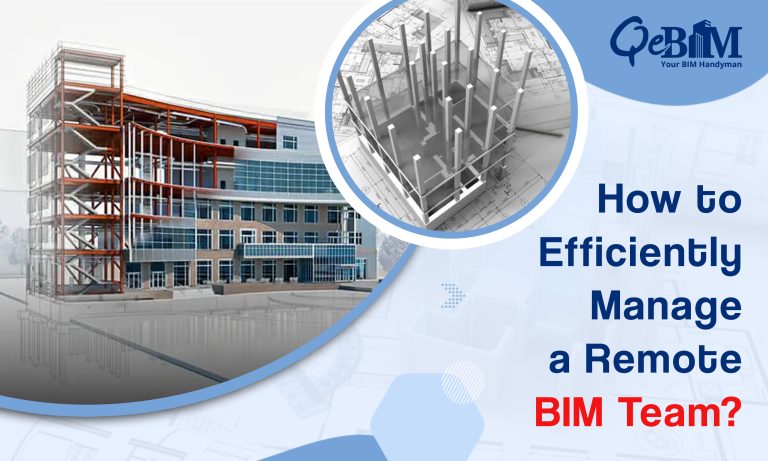How to Efficiently Manage a Remote BIM Team?

Introduction
The world of architecture, engineering, and construction (AEC) has witnessed a significant shift in recent times, with more companies embracing Building Information Modelling (BIM) technology. Alongside this transformation, remote work has become increasingly prevalent, offering numerous benefits to employers and employees. Managing a remote BIM team, however, comes with its challenges. In this blog, we will explore the top tips to effectively manage a remote BIM team and ensure seamless collaboration, productivity, and success of a BIM Company.
1) Invest in Communication Tools and Infrastructure
Effective remote team management relies on communication as its core element. According to a survey conducted by Buffer, the primary hurdle for 20% of remote workers is communication. To facilitate effective collaboration, invest in reliable communication tools. Video conferencing platforms, project management software, and instant messaging tools like Skype, Slack, etc., can help team members stay connected, exchange ideas, and address challenges in real-time. Create a virtual workspace that emulates the office environment, promoting spontaneous interactions and idea sharing.
2) Set Clear Expectations and Goals
Set definite expectations and objectives for every team member, outlining their roles and responsibilities. Transparent communication about project objectives, timelines, and deliverables is crucial to keep everyone aligned and motivated. Clearly define project milestones and regularly review progress to ensure the team is on track and address any potential issues promptly.
3) Foster a Collaborative Culture
Building a sense of camaraderie, togetherness, and teamwork among remote team members is essential. Encourage regular virtual meetings, facetime, brainstorming, webinars, and knowledge-sharing initiatives. Virtual team-building activities can strengthen the team’s bond and create a positive working atmosphere. According to research conducted by McKinsey Global Institute, organizations with connected employees experience a notable boost in productivity, ranging from 20% to 25%.
4) Provide the Right Tools and Training
Remote BIM teams rely heavily on technology to execute their tasks. Ensure your team can access the necessary BIM software, hardware, and resources. Additionally, offer training and support to help team members to intensify and strengthen their skills and stay updated with the latest developments in BIM technology. Well-trained employees will work more efficiently and contribute to the overall success of the projects.
5) Establish a Flexible Work Schedule
Remote work allows team members to have a degree of flexibility in their work hours, boosting productivity and work-life balance. A survey by Owl Labs reported that remote workers are 24% more likely to feel happy and productive when they have a flexible schedule. Be open to accommodate various time zones and personal commitments as long as the team meets the project deadlines and maintains effective communication.
6) Encourage Regular Feedback and Check-ins
Maintain an open channel for feedback and encourage regular one-on-one check-ins with team members. Constructive feedback plays a crucial role in recognizing areas for improvement and promoting a culture of continuous learning and growth. Moreover, these regular check-ins create a platform for team members to address challenges and collaboratively find solutions.
7) Focus on Data Security
BIM projects often involve sensitive and confidential information. Hence, it is imperative to establish strong data security measures to safeguard intellectual property and client data. Utilize secure file-sharing platforms and ensure that all team members adhere to strict data protection protocols.
8) Emphasize Work-Life Balance
The significance of work-life balance is essential when dealing with remote work, as it can sometimes fade the lines between professional and personal life. To promote a healthy work-life balance, it is vital to encourage team members to prioritize their well-being. This can be achieved by establishing clear boundaries and respecting their personal time. Avoid expecting immediate responses outside of work hours, as this can cause burnout and decreased productivity in the long run.
Conclusion
Effectively managing a remote BIM team requires a combination of clear communication, collaboration, and the right tools and resources. By fostering a culture of teamwork, providing adequate training and support, and prioritizing work-life balance, you can maximize your team’s productivity and ensure successful project delivery. Embrace the benefits of remote work while addressing its challenges, and your remote BIM team will thrive in the ever-evolving AEC industry, making you the most trusted and reliable BIM Service Provider in the industry.